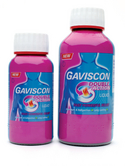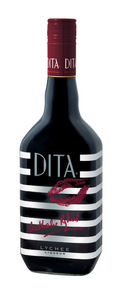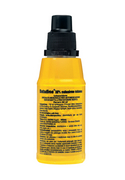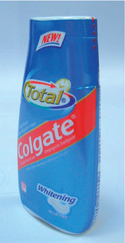Green sleeves
19 February 2007Biodegradeable shrink sleeves from renewable sources look set to be a feature on shelves this year follwing advances in sleeve production and the availability of suitable corn-based PLA films. Robin Meade reports
Decorative Sleeves says it recently became the first European shrink sleeve manufacturer to add a film made from renewable resources to its product range and is running a series of trials with leading customers using EarthFirst PLA shrink film manufactured from polylactic acid resin.
A supplier of the film has confirmed reports from mid-market shrink sleeve manufacturers that they had been quoted commercial availability in six to eight months at a price comparable to PET.
EarthFirst TDO film, which is made from PLA resins developed by NatureWorks in the US, is an alternative to petroleum products, which is annually renewable and 100% compostable. PLA has further environmental benefit in shrink applications as shrinkage can be achieved at lower temperatures, requiring less energy consumption. Lower temperatures also help to reduce the size of tunnels and increase throughput.
However, while the absence of oil offers greater price stability, concerns have been expressed about reliance on an agricultural product, which could be affected by weather and commodity prices.
PLA was first used commercially in a shrink sleeve application last year by New York label converter Seal-It, which specialises in full-body shrink sleeve labels in PVC, PETG and OPS. The PLA sleeve for a soft drinks container was printed on its latest 40in ten-colour gravure press, but Seal-It president Sharon Lobel warns that even though the final product looked much the same as labels produced using petroleum-based films, the converting and handling was very different and it took time to learn how to work with it.
EarthFirst TDO is manufactured in the US by Plastic Suppliers, which had to make modifications to a basic PLA film, which was too brittle for shrink sleeving. However, it says, PLA is a good manufacturing fit with its OPS products, so rigidity could be reduced through alterations to the manufacturing process as well as the use of additives.
Shrinkage is now 75% in the transverse direction, which Decorative Sleeves' sales director Jon Cowan says is ideal for the decoration of a variety of bottle and container shapes.
European supplies of PLA are shipped from the US to UK subsidiary Sidaplax Plastic Suppliers in Northampton. Colin Barnard, general manager in the UK, confirmed that the TDO film would be generally available later this year and that the price would be similar to PET. He also confirmed that there is a “lot of interest across the market.”
Among smaller producers, Gareth Partlett, business manager for flexible packaging division of The Tungate Group in Cheadle, Staffordshires, says he and his customers were also eagerly anticipating PLA.
“We are talking to our customers and our suppliers. PLA is about the same cost as PET, but the green credentials are very attractive to some customers, especially those that are looking to create packaging that meets the trend for recyclable and renewable materials, especially if it goes with the type of product they produce,” he says.
PLA and the addition of new applications is not the only area for optimism among sleeve producers. A recent report predicted double digit growth in the market and several have forecast an increase this year of 15% over last.
Tungate, which prints sleeves in UV flexo in up to nine colours, concentrates its business at the low-run end of the market for smaller brand owners. The company entered the shrink sleeves market in 2000 and has since developed a £1.75m turnover on the back of niche products at runs of 50-100,000 linear and has now developed a full-service capability and installed an application line inhouse at a cost of almost £70,000.
“We still work with our subcontractors. This was a judgement call and was a tough decision to take. At our end of the market we do not make any real money out of this, but it gets customers into sleeves at a low cost. It gets them off the ground, so to speak, and we can also use it to test and prove the quality of a product.”
Pascal Leroy, marketing manager of Sleever International, says his company has the capability to produce sleeves in PLA shrink film, but says that demand for such products was not there yet. “In terms of demand, on PET packaging bottles, aseptic filling, packaging recycling and/or valorisation”, the growth is in PET packagings,” he says.
He adds that Sleever already has a product developed to meet demand for green packaging for companies like Coca-Cola and Carlsberg. He says the Petsleeve, which is a sleeve using a SI-TPE-G low density film, has been accredited by recyclers in five Europeans countries' allowing PET packaging to be recycled to “nearly 100%”.
The basic attraction of sleeves - stand out on shelves - remains a big driving force in the market. They provide wider possibilities for decoration, along with a 360-degree marketing message and enable promotional sleeves banding multi-packs together. And when combined with a tamper-evident sleeve, they provide consumer safety alongside decoration.
The trend is also continuing toward the use of imaginative container shapes, especially among drinks brand owners, and in the use of more sophisticated finishes, such as super metallic inks, 3D effects, holographic designs, indicator inks, gold and silver sparkle and security inks. The possibilities have also generated strong interest for promotional shrink sleeves that can be reverse printed to provide a peel away special offer or prize.
Sleever says new techniques and finishes are essential to meet the consumer shift away from traditional packaging products to a more modern look. Corporate brands are developing a trendy image, especially in the spirits segment where they are redesigning their bottles with the assistance of creators and playing with formats to win over young adults.
“Sleever has just launched the Skinsleever, the sleeve with a relief, which is a world premiere, as well as Sleever Braille and the Sleever Mirror, Leroy says. “More developments with new products are planned, but it's too early to
discuss them.”
The Skinsleever is the result of four years' research and brings a new sensory dimension to sleeves, the company says. It has so far recreated six leather finishes, such as lizard, python and ostrich, all of which are in a palette of modern colours.
It combines three new technologies; a new-generation of mono-oriented elastomer-based films, developed by Sleever Technologies. This remembers its shape after heat shrinking and makes possible a relief effects or three-dimensional patterns. The 3D motif can be combined with a new helio-engraving printing technique in eight or nine colours - with highly accurate positioning to 0.3mm - reproduces the subtle effects of luxury leathers. Sleeving on Powersleeve Evolution 3 and infrared shrink Powerskinner machines makes it possible to reach speeds of between 300 and 900 bottles/min.
The first applications were with Cognac de Luze for a limited series of leather-encased XO Cognac flasks in a plexi gift set. The second was for Icelandic, a collectible luxury mineral water adorned with a small brown sheath and leather lacing.
Another effect is a Mirror solution combining the company's mono-oriented film, SI-PET-TG 050-Z, which has an intense transparency factor that reinforces the reflective character of the film and is formulated for helio-engraving technology using metallic varnishes. It has been used on a limited series of the Dita bottle, a litchi-based alcoholic drink, designed exclusively by Nathalie Rykiel for the Japanese market.
Sleever has also had a European first with a Braille finish to meet the packaging requirements of the European 2004/27/CE Directive that makes Braille characters mandatory on all new pharmaceutical packaging. It developed a Braille morphing method on the sleeve, whereby the characters are systematically controlled to ensure they are of the correct thickness. The first industrial application was the Bétadine range of disinfectants from Meda in Europe for the Italian market.
Sleeves have other uses for healthcare products. Beatson Clark, one of the UK's leading suppliers to the pharmaceutical industry and dispensing market, has developed a shrink sleeve for a new product in which the customer wanted to retain its bottle shape. The company managed the full project from sourcing the sleeves, arranging application and delivering a complete package to Reckit Benckiser's Gavascon range filling line.
Beatson Clark says sleeves were an important part of the packaging for Gavascon Double Action Liquid B. Rebranding the existing 150ml and 300ml bottles in this way was a cost-effective way to make changes, but keep consumer bonding to the brand through its standard bottle.
Sales and marketing director Lynn Sidebottom says: “The fully sleeved bottle differentiates the Double Action Liquid from the rest of the range and creates greater stand-out appeal on supermarket shelves. It also has the added benefit for the customer of speeding up the filling process because no on-line labelling is required.”
Carlsberg Israel Beer Breweries has introduced in-house labelling of stretch sleeves for its non-carbonated soft drinks. The switch from bottles supplied already sleeved was more cost-effective and also improved logistics as bottles can be filled according to production requirements rather than being reliant on delivery of pre-decorated bottles, says the company.
The sleeves are produced by ITW Auto Sleeves, printed flexo in up to ten colours on 50 micron white film. Products are hot or aseptically filled prior to sleeving. Heatset bottles are filled at 85C at up to 22,000hr on a Krones sleeve applicator while a PDC machine on the aseptic line is also handling 22,000 bottles/hr.
Colgate Palmolive in Manchester has installed a new line to handle full body sleeving of the company's 2 in 1 whitening and mouthwash container, which is rudder shaped, tapered and manufactured from PETE. Equipment supplier Graham Engineering says the main challenge was to build a 150 bot/min line in a limited space. It modulised an RF250 sleeving system to include a twin infeed scroll system to space and position the bottle, a horizontal and vertical material perforator and a Graham steam tunnel with an air tunnel to dry.






